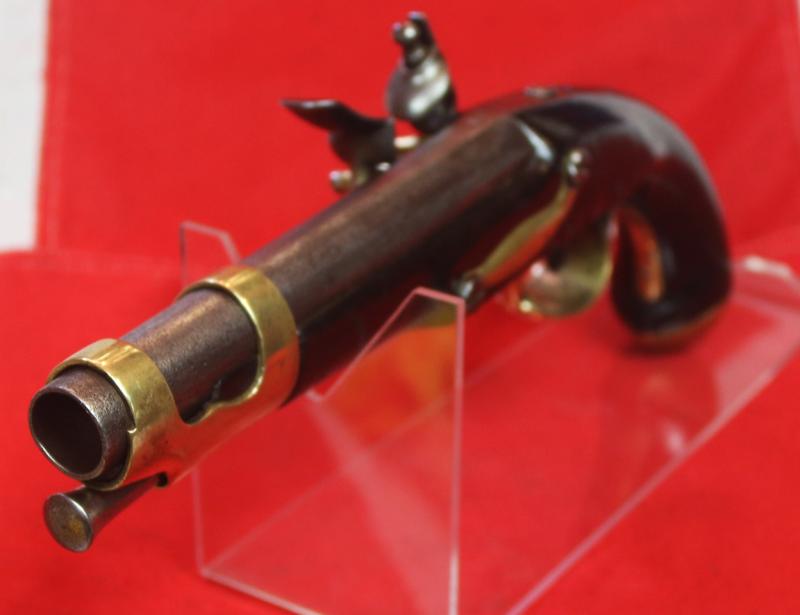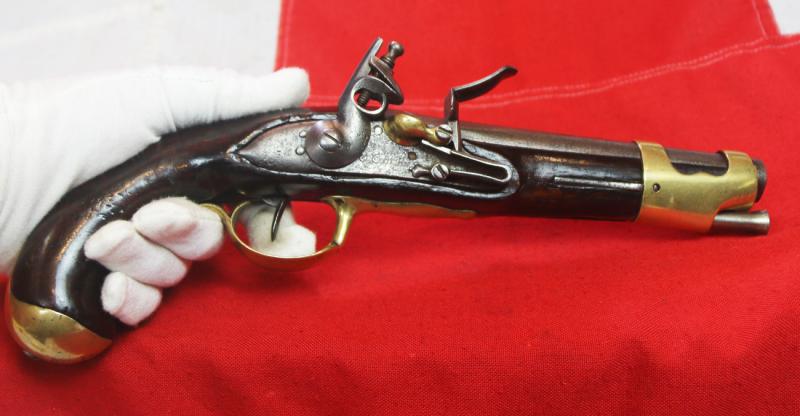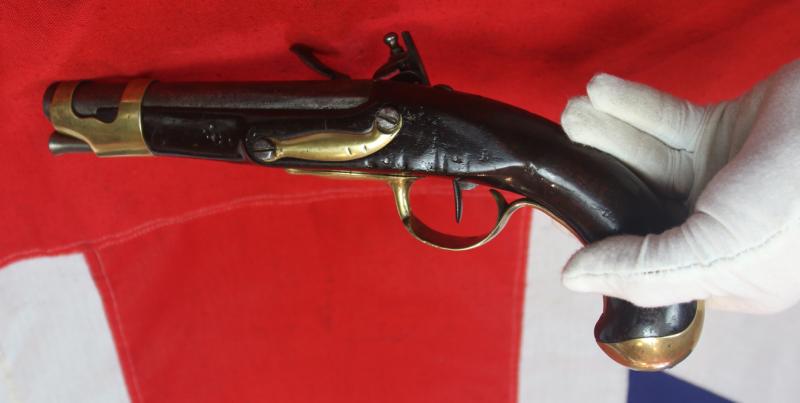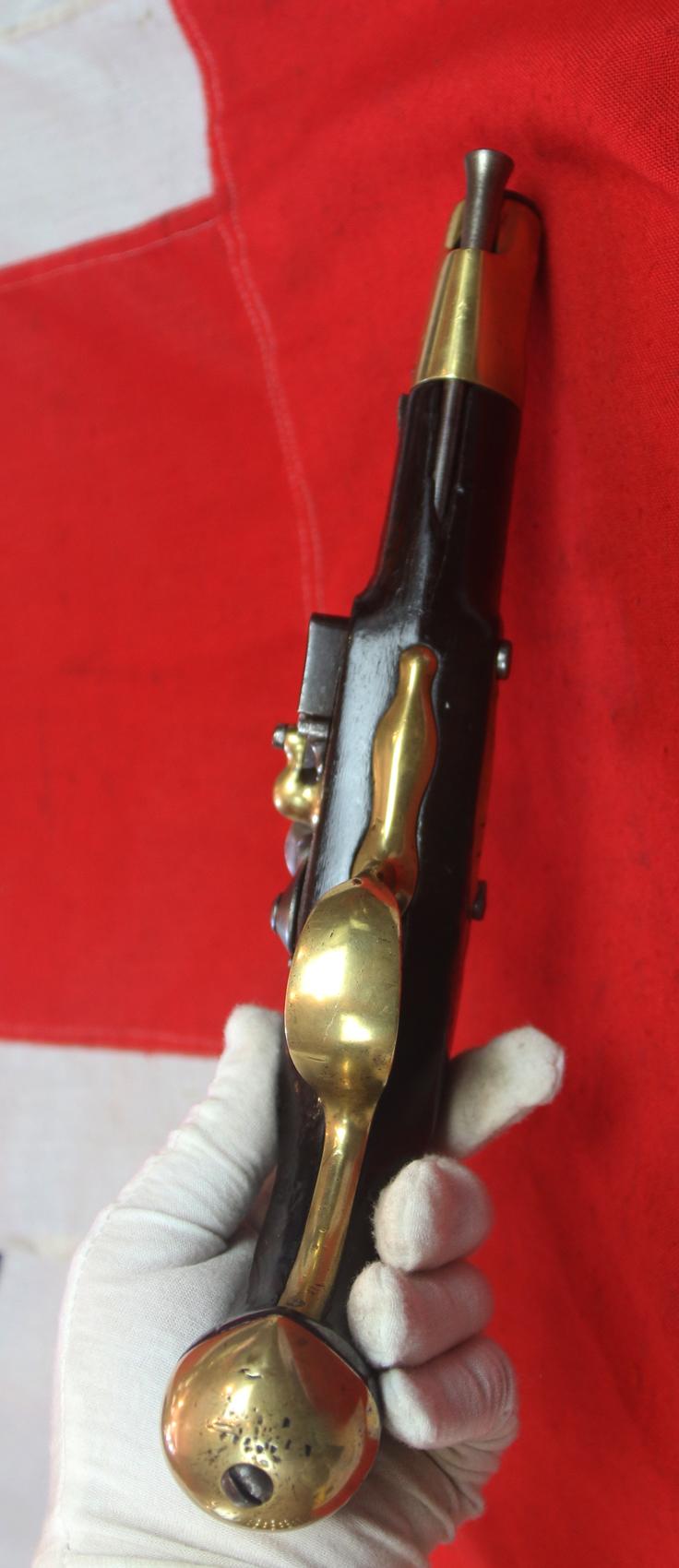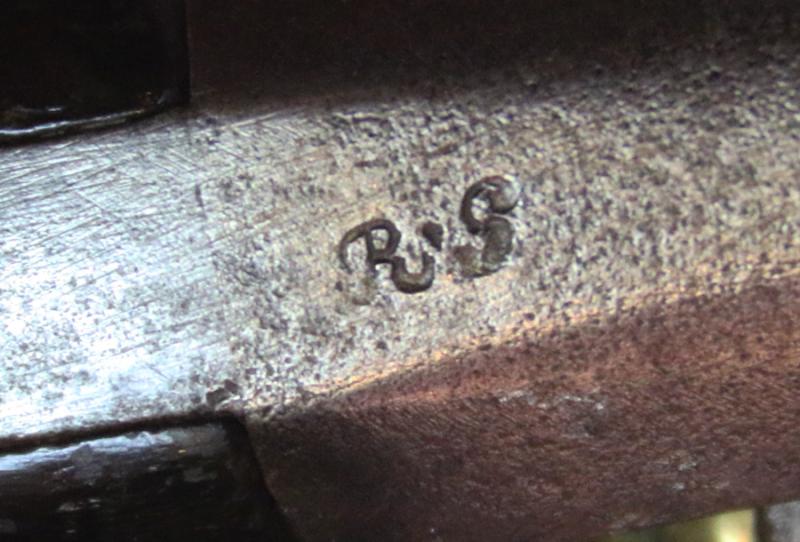A Fine & Most Rare, French Napoleonic Wars Consulat To Empire Period Early 19th Century Flintlock Officer's Pistol From 1801, Manufacture St Etienne, Lock Interior Marked Duran, Identical To Another Sold By the Smithsonian Institution Of New York in 1996
Lock marked St Etienne, and the barrel marked RS, the identical marking as on the Smithsonian Institutes pistol. Likely the version used by L'officier de marine, such as at Trafalgar in 1805, it was also an option for the L'officier Gendarmerie. It was the pattern designed to be used in most cavalry of the Consulat and during the early years of the Empire, as well as in the Navy. The cavalry examples were usually 3cm longer. They were produced until 1808
The modèle An IX replaced the modèle 1777, which had been criticized to the point where the older modèle 1763 had been brought back into service.
This pistol is superficially similar in appearance to the well respected Pistolet modèle 1763/66 pattern. The Pistolet modèle An IX is in effect the same in terms of changes made to the musket pattern of the same year, but when compared to the modèle 1777/1786 had the spring and brass barrel bands of its predecessor restored to make it much easier to service.
The Battle of Trafalgar, (October 21, 1805), was a naval engagement of the Napoleonic Wars, which established British naval supremacy for more than 100 years; it was fought west of Cape Trafalgar, Spain, between Cádiz and the Strait of Gibraltar. A fleet of 33 ships (18 French and 15 Spanish) under Admiral Pierre de Villeneuve fought a British fleet of 27 ships under Admiral Horatio Nelson.
Nelson was outnumbered, with 27 British ships of the line to 33 allied ships including the largest warship in either fleet, the Spanish Santísima Trinidad. To address this imbalance, Nelson sailed his fleet directly at the allied battle line's flank, hoping to break the line into pieces. Villeneuve had worried that Nelson might attempt this tactic but, for various reasons, had made no plans for this eventuality. The plan worked almost perfectly; Nelson's columns split the Franco-Spanish fleet in three, isolating the rear half from Villeneuve's flag aboard Bucentaure. The allied vanguard sailed off while it attempted to turn around, giving the British temporary superiority over the remainder of their fleet. In the ensuing fierce battle 20 allied ships were lost, while the British lost none.
Nelson's own HMS Victory led the front column and was almost knocked out of action. Nelson was shot by a French musketeer during the battle, and died shortly before it ended. Villeneuve was captured along with his flagship Bucentaure. He attended Nelson's funeral while a captive on parole in Britain. The senior Spanish fleet officer, Admiral Federico Gravina, escaped with the remnant of the Franco-Spanish fleet (a third of the original number of ships); he died five months later of wounds sustained during the battle.
The victory confirmed the naval supremacy Britain had established during the course of the eighteenth century, and was achieved in part through Nelson's departure from prevailing naval tactical orthodoxy.
Code: 25387
2150.00 GBP


